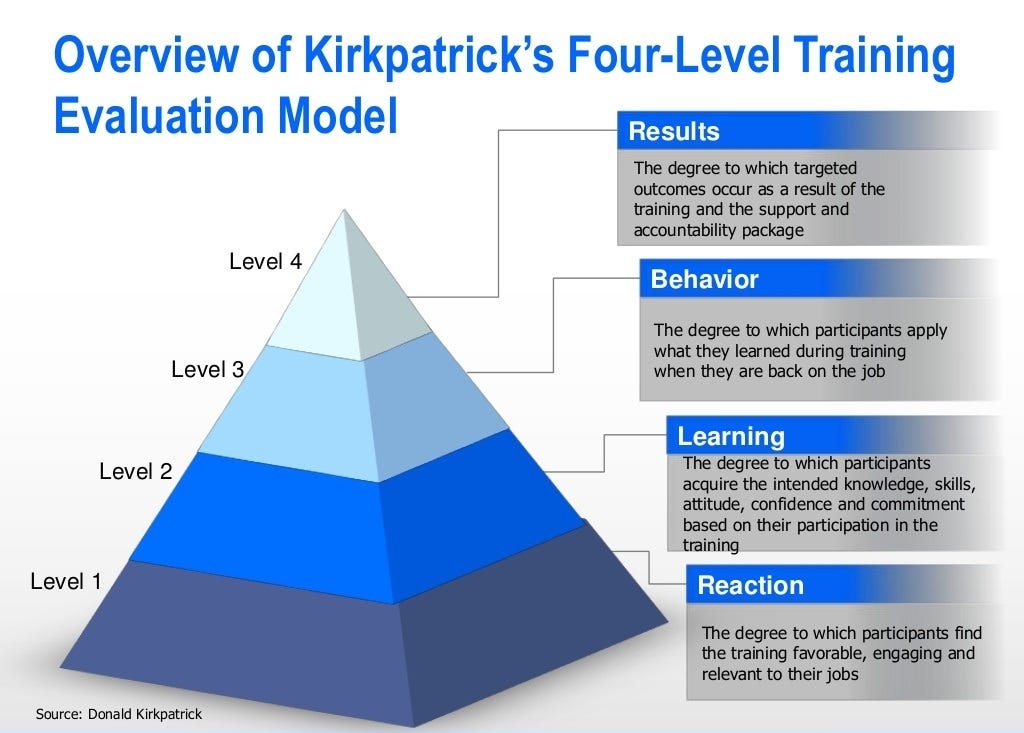The Kirkpatrick model is a widely-used framework for evaluating the effectiveness of training or educational programs. The model was developed by Donald Kirkpatrick in the late 1950s and has since been updated and expanded by various authors.
The Kirkpatrick model consists of four levels of evaluation:
1. Level 1: Reaction
This level measures participants' immediate reactions to the training, such as their satisfaction with the program, the quality of the materials, and the instructor's effectiveness.
2. Level 2: Learning
This level assesses the extent to which participants have acquired new knowledge, skills, or attitudes as a result of the training. Evaluation at this level might include pre- and post-training tests, skills assessments, or other types of measurement.
3. Level 3: Behavior
This level examines the degree to which participants have transferred what they learned in the training to their jobs or other relevant contexts. This might include observing participants on the job, conducting surveys of their supervisors or peers, or other forms of measurement.
4. Level 4: Results
This level evaluates the overall impact of the training program on the organization or other stakeholders. This might include measures such as improved productivity, increased revenue, or decreased turnover.
Each level builds on the previous one, so evaluation at level 4 requires successful evaluation at levels 1-3. The Kirkpatrick model can be used to guide the development of evaluation plans and to assess the effectiveness of training programs.




No comments:
Post a Comment